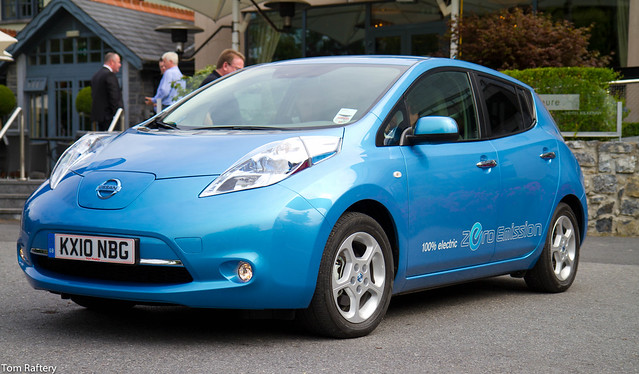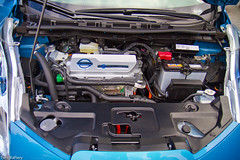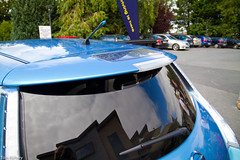I visited SAP’s facilities recently on their energy efficiency day and talked to them about their e-mobility initiatives and the rollout of their 16 Coulomb Technologies electric vehicle level 2 charging stations for their employees.
Tom Raftery: Hi everyone! Welcome to the GreenMonk TV. With me, today, I have Geoff Ryder from SAP and Henry Bailey also from SAP. Guys, we are at the SAP headquarters, here, in California, Palo Alto, because Geoff ?
Geoff Ryder: So, we started earlier this year taking a survey of all of our employees and are they interested in electric vehicles. It turned out they are. About 200 said they are in the market for one. So, how can we deal with that as a company? We can take advantage of that to show sustainability, thought leadership, we can also make this appealing to our employees, appealing place to work. So, you?re seeing today the culmination of our planning process. We are deploying 16 Coulomb Technologies charging sessions. These are level 2 charging stations, they?ll be across campus. And we?ll also —
Tom Raftery: Level 2 charging stations, means what?
Geoff Ryder: It?ll be 240 volts, that?s the voltage that you run your dryer off of. So, that?s very capable. It can charge the battery in a faster time than if you trickle charge with 120 volts. So, we think that?s probably the way it?s going to go. People will want to see that in their public charging option. Even at home, I think we?ll see you know Level 2 charging stations coming.
So, today, we?ve actually turned our first charging stations on and as you can see we have a small fleet of electric cars here.
We have our partners from Nissan with LEAF. We have a plug-in Hybrid Prius, we have a Chevy Volt, and further down, it?s hard to see, here but we have a CODA Automotive, a demonstration car.
Tom Raftery: Okay.
Geoff Ryder: Yeah.
Tom Raftery: Henry you?re involved with the e-mobility solutions, so ?
Henry Bailey: Correct.
Tom Raftery: What?s that exactly?
Henry Bailey: So, what we have done is we have looked at — as Geoff mentioned, we?ve got our employees interested in electric vehicles.
We also have a lot of our customers interested in the how to deploy electric vehicles primarily utilities looking at how do they manage the infrastructure when these vehicles start showing up in their service territories.
So, as people buy electric vehicles, they drive them home, now suddenly they?re plugging them into the Grid, which in some cases using the Level 2 charging station that Geoff described could look like another small home being plugged into the Grid.
So, the Utilities have a couple of opportunities, they need to look at how do they manage this new load coming on to the Grid and then also with the purchasing of energy by the home owner and maybe by third parties who are offering these charging stations at retail outlets, parking garages of businesses how do they, basically, settle those charges back to the consumer so that they can, basically, charge anywhere they want roaming freely around the country if you will.
Tom Raftery: The example being, if I go to the local supermarket and plug-in there, how does that charge appear on my electricity bill?
Henry Bailey: Exactly, but there may be different types of settlement options that the consumer wants. They may want it come back to their home energy bill as a separate line item, so they can see exactly what their energy usage is both when they plug it into their home as well as when they are roaming around to different shopping malls, grocery stores, as you are talking about.
They may also want to settle it to the credit cards, they may want to settle it to cell phones and have it as a part of that infrastructure. So, we?re looking at all different options and we also see businesses taking advantage because – take the mall, for example. If you can attract people with electric vehicles to come and stay maybe an extra hour or two giving them some sort of incentive to stay that hour or two by either the convenience and/or electricity at maybe low or no cost to them directly, then that entices them to stay longer, shop more.
So, they?re looking at it as a way to incent the customers to come and visit their place of business.
Tom Raftery: Excellent. Guys, thanks very much.
Geoff Ryder: Thank you.






